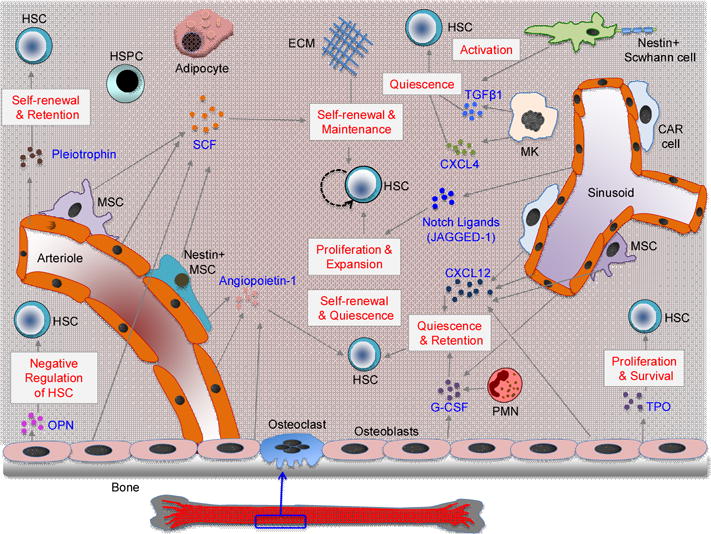Key Figure, Figure 1. Mammalian Bone Marrow HSC Niche.

The diagram shows the cellular composition and cytokines/growth factors that can impact HSC self-renewal and function in the bone marrow (BM) niche. Recent research has identified the role of diverse BM niche cells and HSC progeny including osteoblasts, nestin+ mesenchymal stem cells, CAR cells, non-myelinating Schwann cells, BM endothelial cells and adipocytes, macrophages, megakaryocytes and neutrophils (PMN) in HSC self-renewal, differentiation and function. Niche cells also produce/release several cytokines/growth factors, such as SCF, TPO, TGF-β1, CXCL-4, CXCL-12, G-CSF, OPN, notch ligands, angiopoietin 1 and pleiotrophin to regulate HSC self-renewal, maintenance, survival, retention and function. The extra-cellular matrix (ECM) can also regulate HSC self-renewal and maintenance. SCF, stem cell factor; TPO, thrombopoietin; TGF-β1, transforming growth factor beta 1;CXCL-4, CXC chemokine ligand 4; CXCL-12, CXC chemokine ligand 12; G-CSF, Granulocyte-colony stimulating factor; OPN, osteopontin.
